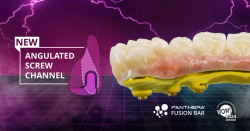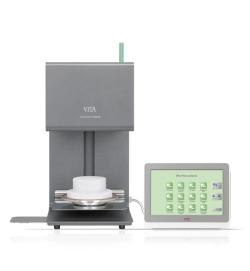- About Us
- Advertise
- Editorial
- Contact Us
- Terms and Conditions
- Privacy Policy
- Do Not Sell My Personal Information
© 2025 MJH Life Sciences™ and Dental Products Report. All rights reserved.
Vanishing Extraoral Dental 3D Scan Spray Saves Time, Avoids Mess
SCANTIST 3D dental scan spray is designed specifically for extraoral applications in the dental field.
Scanningspray Vertriebs GmbH, a company specializing in surface matting for optical 3D scanning, has developed a new, revolutionary 3D dental scan spray named SCANTIST 3D specifically for extraoral applications in the dental field. It is used in dental laboratories and dental technical laboratories as well as in dental care centers.
Even with modern extraoral dental scanners for laboratory use, it is necessary to use matting sprays in many applications in order to achieve good contrast values and thus precise measurement results. Scan sprays are designed to not only improve the scan quality, but also enable the scan of transparent, reflective objects or objects with deep pockets such as telescopes, brackets or occlusal and dental splints in the first place. Dental 3D scan sprays form a matt, white and homogeneous coating when applied. This reduces reflections and other inhomogeneities and thus creates excellent scanning conditions.
Traditional extraoral dental 3D scan sprays contain finely ground white color pigments. The pigments are applied to the object to be scanned and must be removed from the surface of the object after scanning. The pigments dispersed during the spraying process also contaminate the entire scanning environment and settle as white dust all over the scanning area on the scanners, electronic devices such as PCs, and other lab and office equipment. Cleaning is only possible—if at all—with much effort and expense. One of the pigments used, titanium dioxide TiO2, is also suspected of causing cancer via the inhalation route.
After application, SCANTIST 3D products form a homogeneous and very fine matting layer on the object, which, as with other matting sprays, leads to an improvement in the optical properties of the objects to be scanned. At the same time, all SCANTIST 3D products are free of titanium dioxide.
A key feature of SCANTIST 3D “vanishing" is that the coating evaporates (sublimates) independently after the scanning process. The scan spray thus eliminates fundamental application problems of dental 3D scan sprays in the CAD/CAM process, especially in sensitive areas. Since the coating evaporates by itself, there is no need for the otherwise time-consuming subsequent cleaning of the scan objects and the laboratory environment. This is said to result in enormous time and cost savings for users in dental practices, for dental treatment, for the production of dental prostheses, in prosthetics and in orthodontics.



